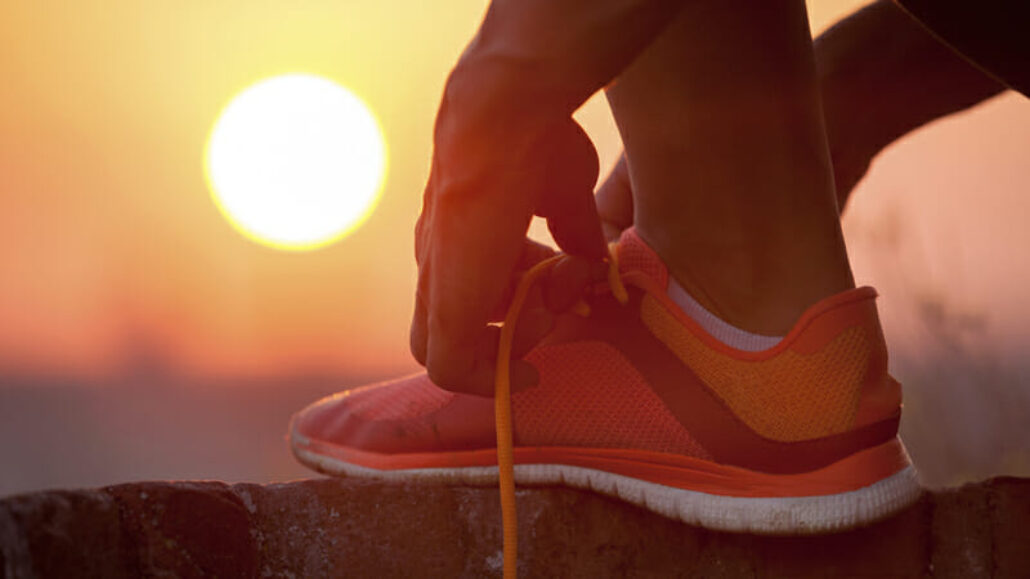Wearing the wrong footwear when you exercise may increase your risk of injury. We explain how to choose the shoe that’s right for your exercise program.
You’ve been reading about the benefits of crosstraining, and you’re sold. You already run, but you want to add strength training and flexibility exercises to create a more balanced fitness routine. You like the idea of a more comprehensive exercise program that will lower your risk of an overuse injury, and a broader variety of workouts to keep things interesting. Your doctor has approved your new program. Time to lace up your running shoes and head to the gym for some strength training, right?
Not so fast.
The kind of support your feet need while you run is very different from the features that stabilize your feet and ankles during the lunges and jumps you perform when you’re going to crosstrain. Traditional running shoes are designed to absorb the repetitive high impact of feet hitting a relatively flat surface in a straight line at a constant pace. The cushioning in traditional running shoes softens each impact and also creates a higher center of gravity for your foot. This makes running shoes less stable during side-to-side movements. Also, because runners move straight ahead, running shoes don’t require structured ankle support. If you crosstrain in running shoes, your risk of a sprained ankle is much greater.
What to look for in crosstraining shoes
Save your running shoes for those weekends or mornings when you are running at least a mile or more. Invest in a pair of crosstrainers for the strength and flexibility aspects of your exercise program. Here are the features you should look for when you are choosing crosstraining shoes:
- Shoe soles should have traction to keep you from slipping, and pivot points for easy turning.
- Shoes with a high top will help stabilize your ankles.
- If you are going to be jumping or climbing, avoid bulk. Look for light, durable, flexible materials that surround your foot with support and move with you.
The right shoe will make your transition to cross training easier—and safer.
Summit Orthopedics offers personalized foot and ankle expertise
Our fellowship-trained foot and ankle physicians understand that your mobility depends on the health of your feet and ankles. If you have suffered an injury or are experiencing symptoms that make walking painful, our team of foot and ankle specialists can help with conservative treatment, seasoned surgical teams, and expert rehabilitation support. Summit Orthopedics specialists have the expertise to evaluate your discomfort and develop a plan to quickly and safely get you back on your feet and on your way.
Start your journey to optimal foot health. Find your foot and ankle expert, request an appointment online, or call us at (651) 968–5201 to schedule a consultation.
Summit has convenient locations across the Minneapolis-St. Paul metro area, serving Minnesota and western Wisconsin. We have state-of-the-art centers for comprehensive orthopedic care in Eagan, MN, Plymouth, MN, Vadnais Heights, MN, and Woodbury, MN, as well as additional community clinics throughout the metro and southern Minnesota.
More resources for you
- Ask Dr. Scofield: What Can Runners Do To Reduce The Risks Of Achilles Tendonopathy?
- Are Your Shoes Dangerous To Your Foot Health?
- Ask Sam Olson: How Do I Find The Right Running Shoe?
- Ask Sam Olson: Does My Running Shoe Matter?
- Ask Dr. Scofield: Guidelines For Transitioning To A New Running Shoe
